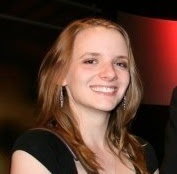Whether you love it or hate it, most people seem to agree that “Where the Wild Things Are,” Spike Jonze’s adaptation of Maurice Sendak’s classic children’s book, isn’t really for kids. Rather than making a cute family film about love and friendship, Jonze’s adaptation is a deeply psychological look at what it feels like to be a 9-year-old, specifically the more tumultuous emotions a 9-year-old experiences rather than the joy of being a kid.
Max, played by newcomer Max Records, feels isolated, different and lonesome, and the performances and script convey these emotions so vividly that the audience feels them right along with him. And once he gets to the land of the Wild Things, life doesn’t get any easier. He has companionship with his cuddly new friends, but the dysfunctional group has just as many problems as he does.
Carol (James Gandolfini) is jealous of KW’s (Lauren Ambrose) new friends and wants desperately to keep their current group together without the intrusion of any newcomers while KW longs to explore something new. Judith (Catherine O’Hara) is constantly skeptical of what’s going on around her, and Alexander (Paul Dano) is frustrated and sad that no one ever listens to him.
Though they all clearly care about the friendship that binds them together, their problems often overpower it. These interactions are so intense and powerful that at times I felt uncomfortable watching it. Rarely is anything in this movie wrapped up neatly in a Disney-esque bow. The Wild Things all look to Max to make their lives better, but sometimes he just doesn’t know how to fix it – a realization that ultimately brings him closer to his mother, as in the land of the Wild Things, he has had to take on a role similar to hers.
This movie is pretty dark for a children’s film, and though the kids in the audience at my screening seemed entertained enough by the fuzzy title creatures, the movie’s complexity went way over their heads. Most of the audience for “Where the Wild Things Are” its opening weekend were adults and, in particular, college students.
This movie wasn’t even really marketed as children’s fare. Jonze’s past films include “Adaptation” and “Being John Malkovich,” intricate R-rated indies, and the offbeat indie vibe of those movies is definitely present in “Where the Wild Things Are.” But Jonze isn’t the only traditionally adult director tackling children’s stories.
Wes Anderson, also known for offbeat R-rated dramedies about dysfunctional people like “Rushmore,” “The Royal Tenenbaums” and “The Life Aquatic,” is tackling Roald Dahl’s “Fantastic Mr. Fox” this Thanksgiving. Like “Where the Wild Things Are,” this is a movie I’m not sure will resonate with kids as much as it will with Anderson’s typical audience.
The trailer for the stop motion animation film about Mr. Fox (George Clooney), his ragtag family and friends and their plan to escape from an evil trio of farmers feels like any other Wes Anderson movie. The dry humor and the interactions between the characters are definitely reminiscent of something like “The Royal Tenenbaums,” if that film were animated and about animals. It seems marketed toward Anderson’s usual target audience, and his fans will likely be curious about this new project, but it’s hard to say whether children will be entertained by his trademark style.
Tim Burton’s adaptation of “Alice in Wonderland” (due in theaters March 5) also looks as dark and fantastical as any other Burton film. Though he’s no stranger to children’s movies, having directed films like “Charlie and the Chocolate Factory” in the past, Burton always puts his own unique spin on the material and his movies always appeal to just as many adults, maybe even to more adults, than children.
So what do you think? Why are directors like Jonze, Anderson and Burton so attracted to children’s stories right now? What other children’s movies can you think of that actually appeal more to adults?
Are libraries obsolete? – I think not!
11 years ago

No comments:
Post a Comment